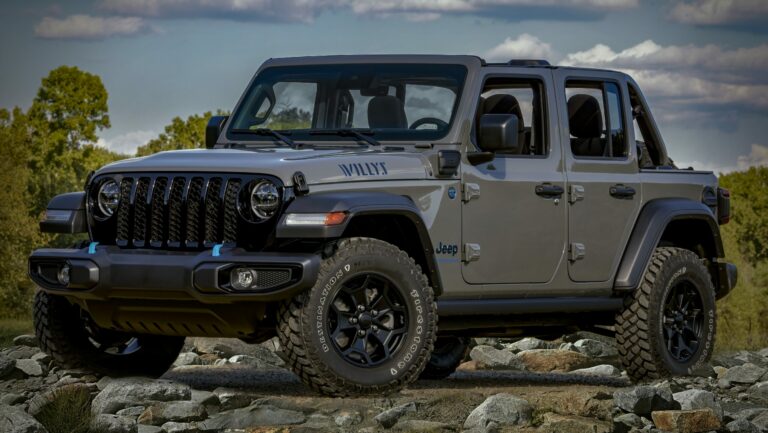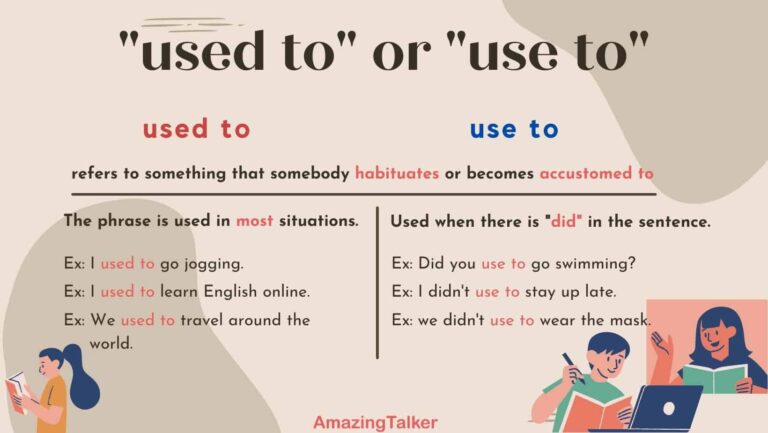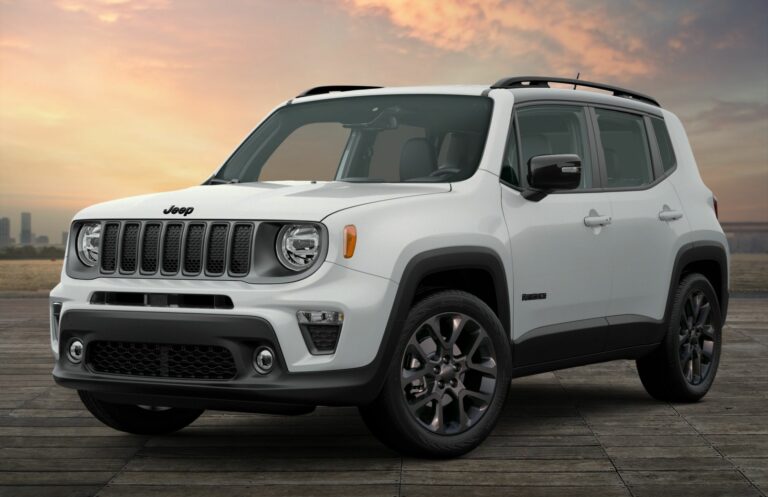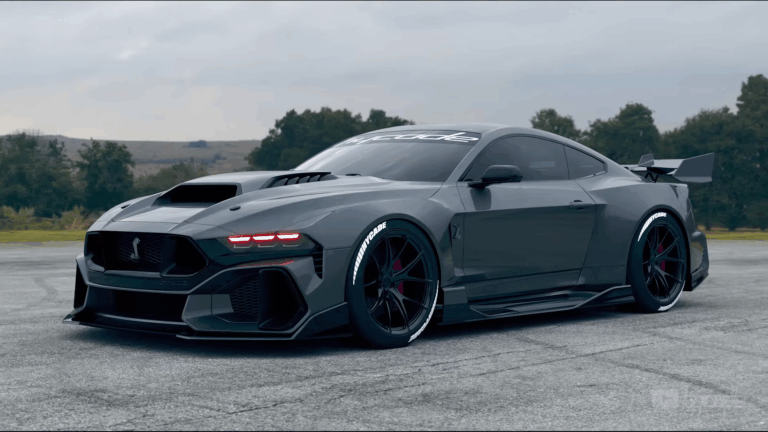Jeep Willys Wheels For Sale: A Comprehensive Guide to Finding the Perfect Rolling Stock
Jeep Willys Wheels For Sale: A Comprehensive Guide to Finding the Perfect Rolling Stock jeeps.truckstrend.com
The iconic Jeep Willys, a symbol of rugged American ingenuity and wartime resilience, continues to capture the hearts of enthusiasts worldwide. Whether you own an original MB, a civilian CJ-2A, a CJ-3A, or a later model, the wheels are more than just functional components; they are a crucial element of its historical authenticity, aesthetic appeal, and overall performance. Finding the right Jeep Willys wheels for sale can be a quest in itself, ranging from sourcing rare vintage originals to selecting modern reproductions or even custom aftermarket options. This comprehensive guide will navigate you through the diverse landscape of Willys wheels, providing insights, practical advice, and essential considerations to help you make an informed decision.
The Enduring Appeal of Jeep Willys Wheels
Jeep Willys Wheels For Sale: A Comprehensive Guide to Finding the Perfect Rolling Stock
From the battlefields of WWII to the farms and trails of post-war America, the Jeep Willys earned its reputation for durability and versatility. A significant part of this rugged image comes from its wheels. Originally designed to withstand extreme conditions, Willys wheels are characterized by their robust steel construction and distinctive designs. For many owners, the appeal lies in maintaining historical accuracy, preserving the vintage look, or simply ensuring that the vehicle rolls on components as tough and reliable as the Jeep itself.
Original Willys wheels, particularly the "combat rims" of the military MB/GPW, are highly sought after for their historical significance and unique two-piece design. Civilian models introduced solid steel wheels, which while simpler, still exude that classic utilitarian charm. Regardless of the specific model, the standard 5×5.5-inch bolt pattern became synonymous with the Willys Jeep, a legacy that even extends to some modern Jeep models. Understanding the nuances of these wheels is the first step in your search.
Types of Jeep Willys Wheels Available For Sale
When embarking on your search for Jeep Willys wheels for sale, you’ll encounter several categories, each with its own advantages and considerations.
1. Original/Vintage Willys Wheels
These are the wheels that came factory-equipped on Willys Jeeps, often showing their age with patina, rust, or signs of wear.
- Combat Rims (Split Rims): Primarily found on WWII MB/GPW models. These are two-piece steel wheels designed to allow for easier tire changes in the field. They feature a specific locking ring mechanism.

- Pros: Ultimate historical authenticity, rugged appearance.
- Cons: Can be challenging and potentially dangerous to mount/dismount tires without specialized equipment and knowledge, often require restoration, may not be compatible with all modern tubeless tires.
- Solid Steel Wheels: Common on civilian models like the CJ-2A, CJ-3A, and some later military variants. These are single-piece steel wheels, similar in concept to modern steel wheels.

- Pros: Authentic for civilian models, generally easier and safer to mount tires than combat rims, very durable.
- Cons: May require restoration (sandblasting, painting), can be difficult to find in excellent condition.

2. Reproduction Wheels
Many manufacturers now produce new steel wheels that faithfully replicate the original Willys designs.
- Faithful Replicas: These wheels are designed to look identical to the originals, including the correct offsets and dimensions.
- Pros: Brand new condition, no rust or damage, often designed for modern tubeless tires, readily available.
- Cons: Lack the historical "patina" of true originals, may be slightly different in subtle details.
- Modern Interpretations: Some reproductions maintain the classic Willys aesthetic but incorporate minor modern improvements or variations (e.g., different finishes, slightly altered center caps).
3. Aftermarket/Custom Wheels
While not original Willys designs, these wheels are designed to fit the 5×5.5-inch bolt pattern and can offer performance or aesthetic upgrades.
- Aftermarket Steel Wheels: Often more robust than typical modern car wheels, designed for off-road use, and available in various offsets and widths. They maintain a rugged, utilitarian look.
- Pros: New condition, strong, often more affordable than aluminum, can be painted to match the vehicle.
- Cons: Heavier than aluminum, may not look "period correct" if authenticity is a priority.
- Aftermarket Aluminum Wheels: Lighter than steel, available in a vast array of designs, and often provide better heat dissipation for brakes.
- Pros: Reduced unsprung weight (improves ride and handling), modern aesthetics, corrosion resistance.
- Cons: More expensive than steel, can be more susceptible to damage from impacts (though modern alloys are very strong), may look out of place on a purely vintage restoration.
Where to Find Jeep Willys Wheels For Sale (Buying Guide)
The hunt for the perfect Willys wheels can lead you to various sources, each with its own advantages and disadvantages.
- Online Marketplaces (eBay, Craigslist, Facebook Marketplace/Groups):
- Pros: Wide selection, potential for good deals, direct contact with sellers.
- Cons: Condition can be misrepresented, "buyer beware" for authenticity, shipping heavy items can be expensive and complex, risk of scams.
- Specialized Vintage Jeep Parts Dealers:
- Pros: Knowledgeable sellers, often pre-inspected or restored items, authenticity guarantees, curated inventory.
- Cons: Prices are typically higher due to expertise and quality control, selection might be limited to what they currently have in stock.
- Auto Salvage Yards & Swap Meets:
- Pros: Potential for hidden gems at bargain prices, opportunity to physically inspect items.
- Cons: Condition varies wildly, requires extensive searching, often "as-is" sales.
- Forums and Enthusiast Communities:
- Pros: Peer-to-peer sales, often good advice and honest descriptions, community trust.
- Cons: Limited inventory, sales might be geographically restricted.
- New Parts Retailers:
- Pros: For reproduction and aftermarket wheels, guaranteed new condition, warranty, consistent availability.
- Cons: No vintage patina, prices are set.
Important Considerations When Buying Willys Wheels
Before you commit to a purchase, several factors should weigh heavily on your decision.
- Condition: For vintage wheels, thoroughly inspect for rust, dents, cracks, and pitting. Surface rust is often manageable, but deep structural rust or cracks compromise safety. For combat rims, check the locking ring and bead seat areas carefully.
- Authenticity vs. Practicality: Decide if a 100% historically accurate restoration is your goal (requiring original or highly faithful reproductions) or if you prioritize modern safety, ease of tire mounting, and performance.
- Size and Bolt Pattern: Most Willys Jeeps use a 5×5.5-inch (5 on 5.5) bolt pattern. While the wheel diameter was typically 16 inches for early models (e.g., 16×4.5J or 16x5J), later models or custom setups might use 15-inch or larger wheels. Always confirm the diameter and width you need, especially if you plan to run larger tires.
- Tire Compatibility:
- Tube vs. Tubeless: Original Willys wheels were designed for tube-type tires. While some can be converted to tubeless with proper sealing, it’s safer and often recommended to use tubes with original rims, especially combat rims. Reproduction wheels are typically designed for modern tubeless tires.
- Bead Seat: Ensure the wheel’s bead seat is compatible with your chosen tire’s bead.
- Safety: Combat rims, while authentic, require specific training and tools for safe tire mounting and dismounting due to the multi-piece design. If you’re not experienced, always have a professional tire shop handle them.
- Budget: Prices can range dramatically based on rarity, condition, authenticity, and whether they are new reproductions or used originals. Factor in potential restoration costs.
- Shipping Costs: Wheels are heavy and bulky. Obtain shipping quotes before purchasing, especially from distant sellers. Local pickup can save significant money.
Installation and Maintenance Tips
Once you’ve acquired your ideal Willys wheels, proper installation and ongoing maintenance are key to their longevity and your safety.
- Professional Installation: For all wheel types, but especially for combat rims, professional tire mounting and balancing are highly recommended. Tire shops specializing in vintage vehicles or heavy-duty trucks often have the necessary equipment and expertise for split rims.
- Balancing: Always have your wheels balanced after new tires are mounted. This ensures a smooth ride and prevents premature tire wear.
- Regular Inspection: Periodically inspect your wheels for any signs of damage, rust, or loose lug nuts. For combat rims, check the integrity of the locking ring.
- Cleaning and Refinishing: If you purchase bare steel wheels, or if your vintage wheels are rusty, consider sandblasting, priming, and painting them with a durable automotive paint. This protects them from corrosion and improves their appearance.
- Tire Pressure: Maintain correct tire pressure as specified by your tire manufacturer and Willys model. This impacts handling, ride quality, and tire life.
Jeep Willys Wheels For Sale: Estimated Price Guide
This table provides a general price range for different types of Jeep Willys wheels. Prices can vary significantly based on condition, rarity, seller, and market demand.
| Wheel Type | Description | Condition | Estimated Price Range (Per Wheel) | Notes |
|---|---|---|---|---|
| Original Combat Rims | Two-piece steel military wheels (MB/GPW), typically 16×4.5J. | Poor/Rusty | $50 – $100 | Requires full restoration, may have pitting. |
| Good/Usable | $100 – $200 | Minimal rust, straight, all parts present. | ||
| Restored/NOS | $250 – $400+ | Professionally restored or rare New Old Stock. | ||
| Original Solid Steel | One-piece steel wheels (CJ-2A, CJ-3A, M38), typically 16×4.5J or 16x5J. | Poor/Rusty | $40 – $80 | Requires full restoration, may have minor dents. |
| Good/Usable | $80 – $150 | Minimal rust, straight. | ||
| Restored/NOS | $180 – $300+ | Professionally restored or rare New Old Stock. | ||
| Reproduction Steel | New, faithful replicas of original steel wheels, typically 16×4.5J or 16x5J. | Brand New | $120 – $200 | Ready for paint/primer, designed for modern tires. |
| Aftermarket Steel | New, single-piece steel wheels, various sizes/offsets (5×5.5 bolt pattern). | Brand New | $80 – $150 | More modern designs, often thicker steel for off-road use. |
| Aftermarket Aluminum | New, alloy wheels (5×5.5 bolt pattern), various designs, sizes, and finishes. | Brand New | $150 – $350+ | Lighter weight, modern look, wide range of styles and quality. |
Note: Prices are estimates and can fluctuate based on market demand, location, and seller. Always verify condition and authenticity before purchase.
Frequently Asked Questions (FAQ) About Jeep Willys Wheels
Q1: What is the standard bolt pattern for a Willys Jeep?
A1: The vast majority of Willys Jeeps (MB, GPW, CJ-2A, CJ-3A, CJ-3B, CJ-5, etc.) use a 5×5.5-inch (5 on 5.5) bolt pattern. Always double-check for your specific model year if unsure.
Q2: Are combat rims safe to use?
A2: Yes, combat rims are safe if they are in good condition, properly assembled, and the tires are mounted correctly. However, they require specialized knowledge, tools, and extreme caution during tire mounting and dismounting due to the multi-piece design. It’s highly recommended to have a professional with experience in split rims handle them.
Q3: Can I put modern tubeless tires on original Willys wheels?
A3: Most original Willys wheels (both combat and solid steel) were designed for tube-type tires. While some solid steel wheels can be made to hold air as tubeless with careful sealing and a good bead seat, it’s generally safer and recommended to use tubes with them. Reproduction wheels are usually designed for modern tubeless tires.
Q4: How can I tell if a Willys wheel is original or a reproduction?
A4: Original wheels often have specific stampings (e.g., "K-H" for Kelsey-Hayes), date codes, or part numbers. They will also show signs of age, such as pitting, original paint remnants, or specific welding seams. Reproductions will look new and might have different manufacturing marks or finishes. Consult Willys enthusiast forums or experts for specific model distinctions.
Q5: What’s the best way to restore rusty Willys wheels?
A5: For solid steel wheels, the process typically involves sandblasting to remove all rust and old paint, inspecting for damage, priming with an epoxy primer, and then painting with a durable automotive paint (often semi-gloss black or a military-correct shade). For combat rims, ensure all components are thoroughly cleaned and inspected before reassembly.
Q6: Should I choose steel or aluminum aftermarket wheels for my Willys?
A6: Steel wheels are more in line with the original Willys aesthetic, are generally more durable against impacts (they bend rather than crack), and are more affordable. Aluminum wheels are lighter, offer more design variety, and are resistant to rust, but they are typically more expensive and can crack under severe impact. Your choice depends on your budget, aesthetic preference, and intended use (daily driver vs. show vehicle vs. heavy off-roading).
Conclusion
The journey to find the perfect Jeep Willys wheels for sale is an integral part of owning and cherishing these historic vehicles. Whether you’re a purist seeking to maintain historical accuracy with original combat rims, a restorer opting for faithful reproductions, or an enthusiast looking for modern performance and aesthetics, the options are plentiful. By understanding the types of wheels available, knowing where to look, and carefully considering factors like condition, authenticity, and safety, you can make an informed decision that enhances your Willys Jeep. The right set of wheels not only completes the look but also ensures that your iconic Willys continues to roll reliably, ready for whatever adventure lies ahead.





